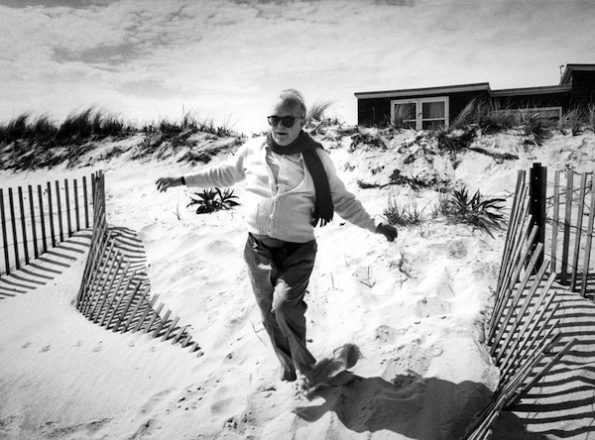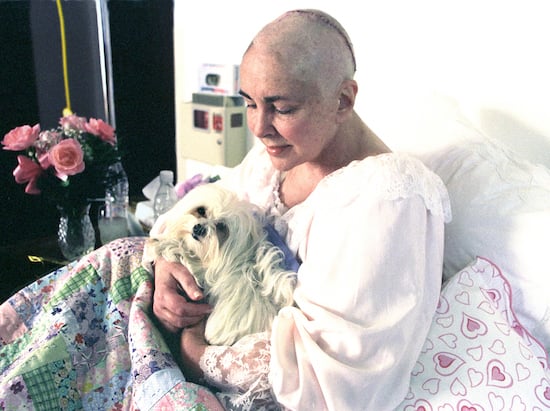Harry Benson’s pictures are worth more than a thousand words.
Benson, 87, a photojournalist more than 60 years, including celebrity portraits and candid shots of numerous LGBTQ icons, is renowned for capturing priceless images:
- Robert F. Kennedy fatally shot and lying in a pool of blood on the floor at the Ambassador Hotel
- The Beatles having a pillow fight in a Paris hotel room
- Refugee camps in Somalia
Benson, the subject of the documentary “Harry Benson: Shoot First,” said it’s all in a day’s work. The film is in theaters and available through On Demand, Amazon Video and iTunes.
“What makes a good picture is you have never seen it before,” Benson said in a recent telephone interview while doing press to promote the documentary. “If I don’t take the picture, it will never be seen.”
Benson’s access to celebrities is unfiltered, he said.
“I’m not controlled by PR,” Benson said. “I want to show what I see. It’s an independent look at them. It’s not something behind a velvet rope. I’m not trying to debunk anybody.”
Benson found himself switching roles in the documentary. This time, he was in front of the camera, a place Benson said he was hesitant to be.
“Sure I was hesitant. I’m used to photographing people. I know how silly it can look. I didn’t want to look stupid,” Benson said.
Eventually, Benson’s wife, Gigi, persuaded him to participate.
“She helped me look at my work in a different way,” Benson said. “I care about the work.”
Benson worked with many queer icons, and shares his memories on three of them.

Truman Capote photographed in 1984 on the beach in Wainscott, Long Island near his summer home. Photo: Harry Benson.
Capote, the openly gay writer who penned the 1958 novella “Breakfast at Tiffany’s,” gained enormous notoriety with “In Cold Blood,” the 1966 true crime novel about the 1959 murder of a Kansas farm family. Capote spent four years in Holcomb, Kansas, interviewing numerous sources, including Richard Hickock and Perry Smith, who were convicted and hanged in 1965 for the murders.
Smith read the book and wasn’t happy with his portrayal.
“By calling the book ‘In Cold Blood’ and telling the true story of the heartless murderers, Perry Smith felt betrayed by Truman because Perry had trusted Truman to write a more sympathetic version of the story.
“Truman cried in a diner with me one night. He felt he had betrayed (Perry). He said, God will never forgive me for this,” Benson said. “Truman sobbed about it.”
Capote also was known for his access to the glitterati – He hobnobbed with the crème de la crème of New York’s high-society elite — until “La Côte Basque 1965” — the first chapter of his planned roman à clef “Answered Prayers” — was published in Esquire magazine in November 1975.
Capote’s writing exposed the juicy, dirty secrets of his wealthy female friends, and his fall from grace was immediate — Capote’s jet-set glamorous friends ostracized him for the rest of his life. Capote died in 1984.
“That broke his heart,” Benson said. “The biggest social people wouldn’t talk to him. He was surprised by their reaction. He thought he had given them volumes of publicity and was the only storyteller who could tell their story.”

Harry Benson was the only person Elizabeth Taylor, with her dog, allowed to photograph her in 1997 after she had surgery to remove a brain tumor. Photo: Harry Benson.
Taylor, the Oscar-winning film legend and one of Hollywood’s first outspoken HIV-AIDS activists, was followed by the paparazzi for decades, but also loved the cameras.
“Elizabeth didn’t go through the back door if she could go through the front door with hundreds of cameras,” Benson said.
“I had known her for years. I knew her in Rome (in 1961 and 1962) when she did ‘Cleopatra’ and had an affair (while she was married to Bobby Fisher) with Richard Burton,” he said.
About 35 years later, in 1997, Benson received an assignment from Life magazine to photograph Taylor, who was preparing to have an operation in Los Angeles to remove a brain tumor.
“Her publicist said I wouldn’t be able to photograph Elizabeth before or after the operation. I told her publicist, You better ask her. I know Elizabeth, and she marches to her own drummer,” Benson said.
“The message came back. I could photograph her before, during and after the operation,” Benson said. “I didn’t photograph during the operation.”
Warhol – the famed New York-based pop artist who was avant-garde and commercial, managed the punk band The Velvet Underground, was known for his pop culture silk screens – wasn’t a fan of bathing, Benson said.
“Andy smelled. He had bad body odor,” Benson said.
“I liked him. He was friendly. I liked photographing him. I liked to talk with him. He loved photography,” Benson said.
Warhol also was a fixture on the New York club scene.
“I would see him at parties. He was out every night. He was the biggest party animal. You would see him at Studio 54. Every night I went, I would see him. He wouldn’t drink much. He would always be holding a glass, but I don’t know if he drank from it. I didn’t see it,” Benson said. “I wish I had asked him to do some paintings for me.”
